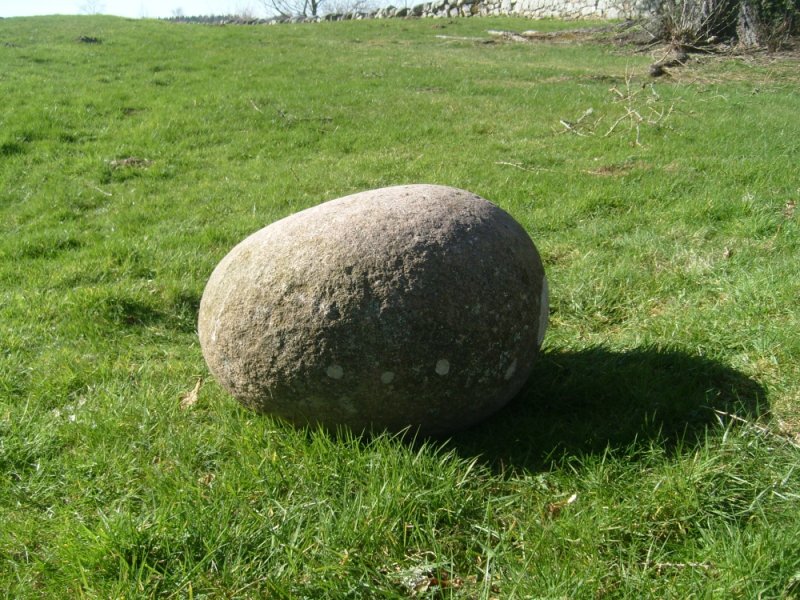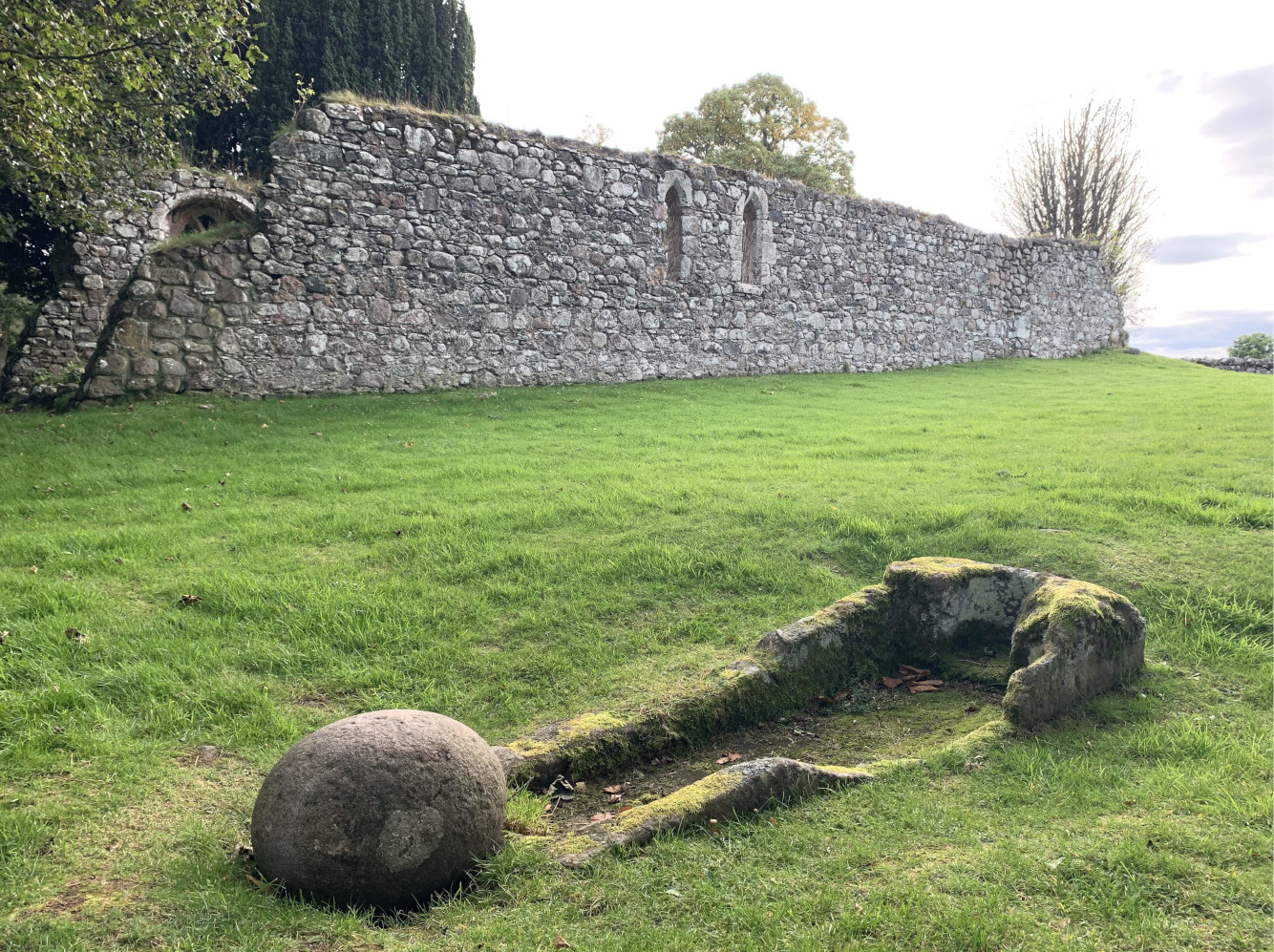Barevan Stone
The 105kg (231 lb) Barevan stone is granite and oval in shape, similar to both the Inver stone and the Dalwhinnie stone. However, it is slightly biased on one side.

Challenge
Like other traditional lifting stones, the five stages of lift are used here:
- Break the ground (put wind beneath the stone)
- Bring the stone to waist height
- Bring the stone to the chest
- Bring the stone to the shoulder
- Press the stone overhead
We recommend moving the stone away from the stone coffin to protect both the stone and the coffin. There is plenty of green space to use.
History
The stone sits in the ruins of an ancient church yard at the foot of a stone coffin. Perhaps the most unusual and interesting setting for a lifting stone which makes this stone popular.
Services at the church ended in over 400 years ago, and the church itself dates back to the 14th century. The earliest reference to the stone is from the late 1800s where it was described as a ‘test of strength in the older days’ — suggesting that the stone was lifted sometime in the 1700s.
The stone may have had a much different use prior to being used as a test of strength. The key to understanding what it may have been used for is the stone coffin.
The stone coffin next to the stone is interesting. It’s alone in an otherwise empty part of the church yard and it has a carved out area to fit a head. This static stone sarcophagus wouldn’t have been used for the dead, it’s too out-of-place. The purpose of the coffin seems to be as a form of punishment. Perpetrators would be made to lie in the coffin, then they would be enclosed by a large stone slab, leaving the head exposed. Church goers would spit on the face of the perpetrator when they walked past.
Escaping the coffin would still have been possible even with the stone slab as a seal, which is where the Barevan stone comes in to play. We suspect that the stone would be placed on top of the stone slab to make it near impossible to escape. This form of punishment suggests that the stone could date back as far as the mid 1500s.
Surprisingly the stone is no longer used to enclose people in to the coffin for punishment. People once again use the stone for lifting, as was the case in the past
Location
The Barevan stone is at the foot of a stone coffin in the ancient church yard ruins.

The precise location is on our map.
In media
Featured in Stoneland.
References
Stonelifting: An Ancient Test of Strength Revived - Martin Jancsics and Dr. Bill Crawford
Read the liftingstones.org letters
Join thousands of other stonelifters who read the world's most popular stonelifting newsletter.